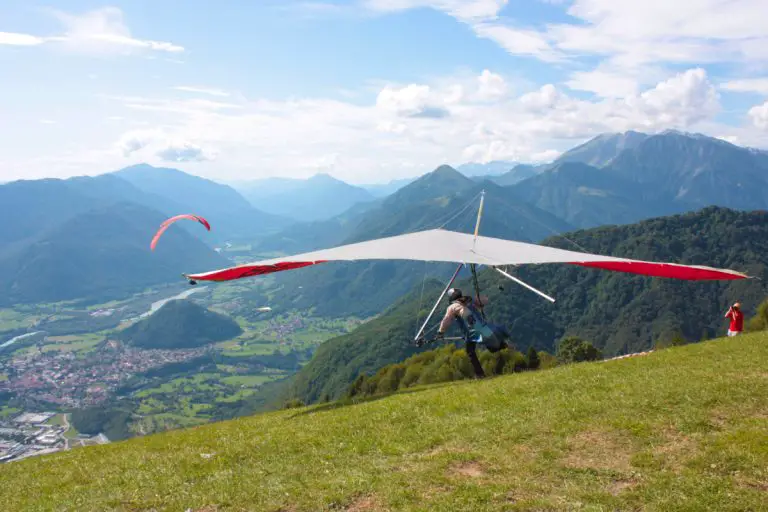

Hang gliding is two to three times faster than paragliding and the flight is made longer, which further increases the feeling of speed. But paragliding can just as well provide breathtaking sensations when you go into aerobatic mode or for an adrenaline rush baptism of paragliding: 360°, wing-over, tight turns, nose-downs to the ground and candles to the sky will quickly make you lose the notions of up and down and forward and backward movement.
Hang glider vs paraglider free#
It is ideal for contemplative people and for a first free flight experience.

Paragliding offers more accessible basic sensations: you are seated, you fly between 30 and 40 km/h, there is no sensation of vertigo, you have the impression of being in a hammock chair and on a swing at the same time.

You can then discover the landscape scrolling under your feet, you can feel the wind on your face and the slightest variation in lift due to the thermal currents generated by the sun. Whether paragliding or hang-gliding, the sensation of flying without any engine noise remains a magical and unique sensation. The structure is rigid and exceeds 4 metres in length and the weight of a hang glider exceeds 25 Kg! That's why hang gliders often opt for a station wagon or an extended vehicle with a roof support ladder to carry their flying machine!Īnd if climbing a summit with a paraglider on your back is something everyone can do, doing it with a hang glider is a feat and deserves to be highlighted!Īre the sensations in flight different between the two types of flying wings? In other words, a paraglider is easy to carry everywhere and can be easily stored in the boot of a car.įor hang gliding, the problem is quite different. As indicated above it is made up of a flexible canopy, lines and a harness, all of which is stored in a large rucksack weighing around 15 kg for classic paragliders and around one kilo for the lightest in the world. This is a very interesting point which will clearly make the difference between the two machines and which partly explains the expansion of paragliding and the progressive decline of hang-gliding. In any case, both types of aircraft are equipped with emergency parachutes which prevent any major problems in flight. Hang-gliders are much faster and are therefore less sensitive to turbulence, but may require more precision and concentration both in their aerial evolution and in their approach during landings. This is why modern paragliders are all designed to quickly return to their original shape after a flight incident as soon as they regain airspeed. Therefore it is possible that in case of strong aerological turbulence this shape may be damaged and the glider may stall or go into a parachute. The paraglider flies thanks to a flexible profile conditioned by its speed relative to the air mass. The risks are a little different between the two machines.
Hang glider vs paraglider full#
If the beginnings of both disciplines were rather rock'n'roll and reserved for pioneers, this is no longer the case today with aircraft that have reached their full maturity and a maximum level of safety. Which glider offers the best safety: Hang gliding or Paragliding? Hang glider pilot training has also seen the light of day and the practice has been democratised. Since then the hang glider has been constantly improved with double surface constructions which improve lift (flat lower surface, curved upper surface like on an aircraft wing), new lighter composite materials with a rigid structure which no longer need masts and stays. Many challenges were then born: flying over the Statue of Liberty in New York or the Eiffel Tower in Paris.īut it was in 1973 that the Frenchman Christian Paul-Depasse, with his company Delta, registered the first brand of hang glider in the world: the DELTA-PLANE brand, which has since given its name to this flying aircraft. In the 1960's we find pioneers such as the Australian Bill Moyes who made the first hang glider free flight in history. In the end it was the classic parachute that won the day, but the hang glider was propelled to the forefront. NASA was looking for the best way to glide the space capsules after their re-entry into the atmosphere. But it was especially during the conquest of space that work on the hang-glider was most intense. The hang-glider, or rather its ancestor signed Albert Berlinger, appeared very early in 1811 and was improved in 1890 by Otto Lilienthal.


 0 kommentar(er)
0 kommentar(er)
